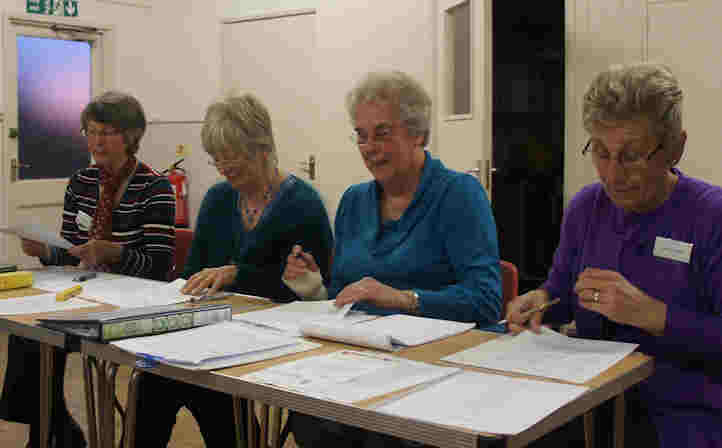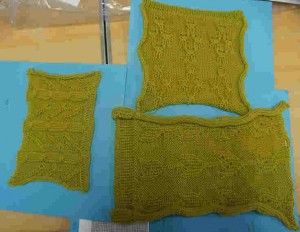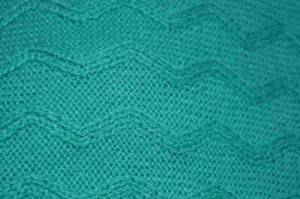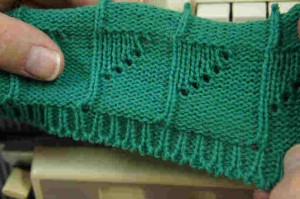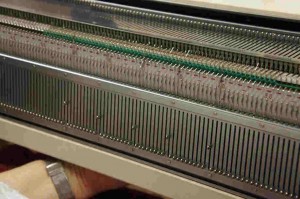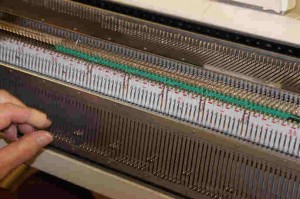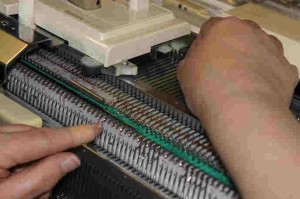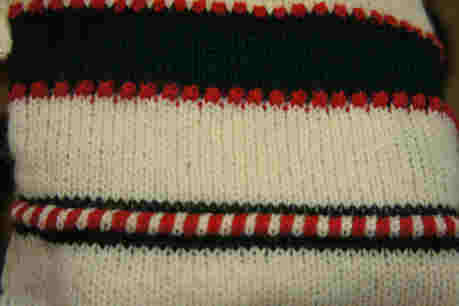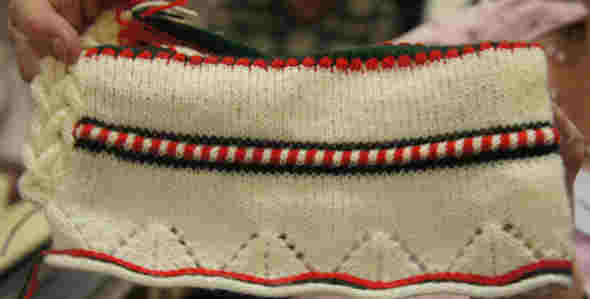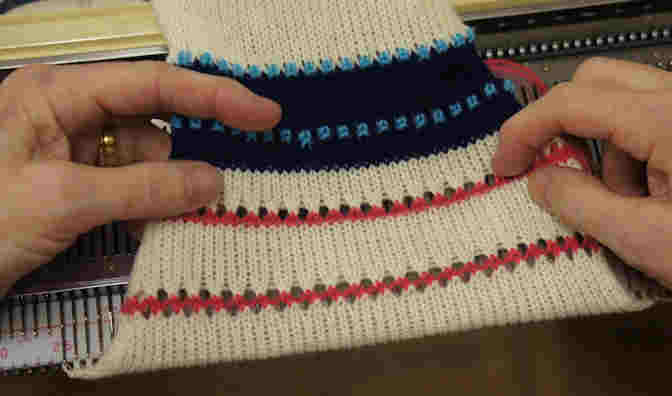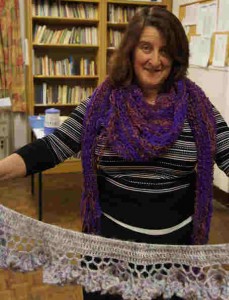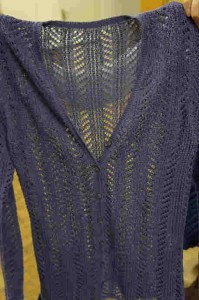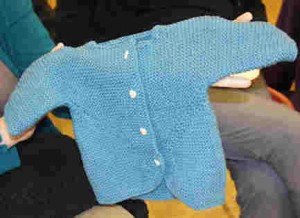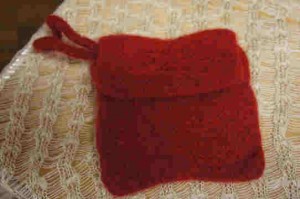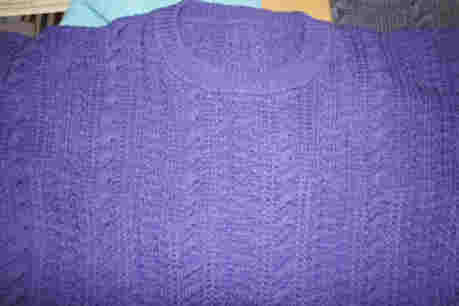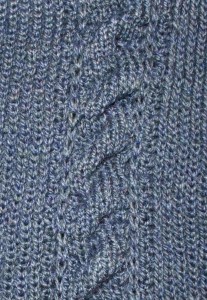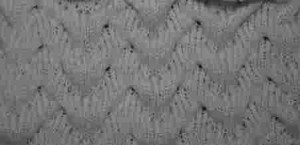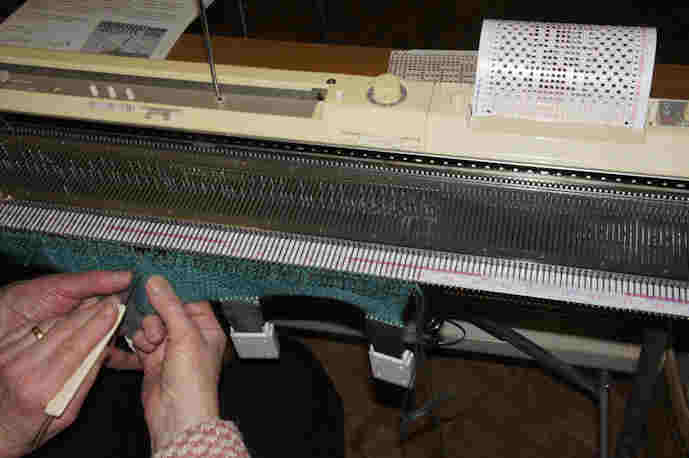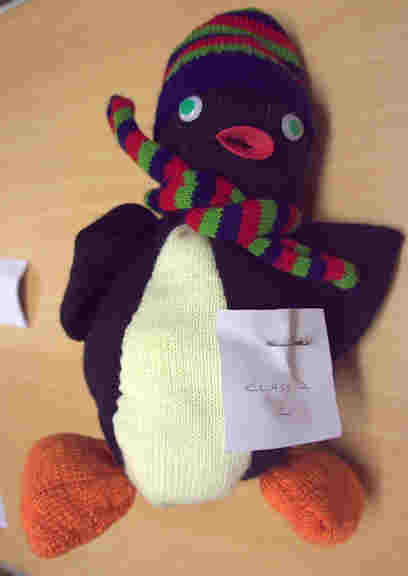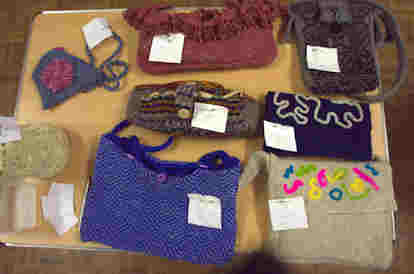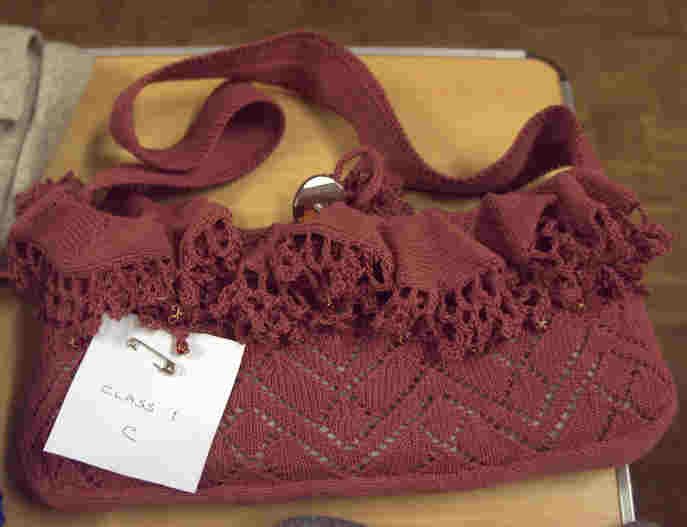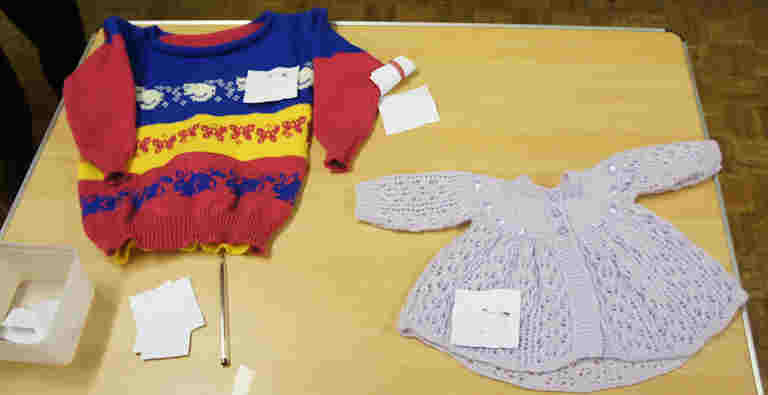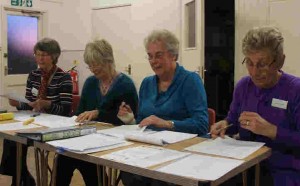
This meeting started with the AGM, a new committee was elected including a new Chairman – Kathy who took over the role from Brenda. We would all like to thank Brenda for doing such a sterling job for the last 10 years, she has been inspirational and her breadth and depth of knowledge will be missed by the committee. She will of course continue her membership of the club and so we will still be able to benefit from her experience. We wish her every success in the future.
After the AGM, the speaker was Liz Holness Chairman of the Guild of Machine Knitters and Fleet Knitting Club in Hampshire.
She talked to us about using the ribber for more than just welts and cuffs. It was an extremely useful session, Liz passed around some samples she had made and showed us some garments including some lacy stoles that had been made on a Knitmaster machine in around 2 hours. These were made in a variety of yarns, both natural and man-made. They draped beautifully. The original pattern had been created by our chairman Brenda and exhibited on the Guild’s stand at various exhibitions.
Then gave us a demonstration of how to adjust the ribber on her Brother machine so that it was correctly lined up and the gap between the beds was the ideal one.
An interesting demonstration of a simple rib pattern showed us how to create a patterned fabric simply by putting needles in and out of work on the ribber. The pattern has a vertical line throughout using one needle on the ribber – spaced out as you choose, then after a few rows a second needle is introduced adjacent to the first, then a few more rows then a third needle is introduced – this is repeated until a triangle is formed. All ribber stitched, except the one on the original needles are transferred to the main bed and the ribber needles returned to NWP. This is repeated across the width of the garment and up the garment – to give a pleasing pattern.
|
|
|
|
|
Liz also talked about getting machine knitting better known, especially amongst the new generation of hand knitters. Many people come into machine knitting from hand knitting when they find they want to expand their craft skills, develop their skills into a business or have less time to make garments, so recently Liz published an article in a knitting magazine. She has been manning the Guild’s stand at a range of exhibitions throughout the country and has also made an appearance on the TV channel http://www.knit1.tv/
